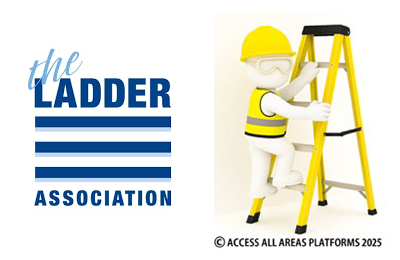
Ladder Association Training
Quickest way to obtain information or receive a training quote is to email us today with your requirements, a member of our friendly training team will be more than happy to help.
Whether you use ladders regularly at work, or you're an occasional ladder-using DIYer at home, you should be trained to know how to use ladders safely.
It might sound strange to some people to think they need to be trained to use a ladder. They’re simple, right?
Yes, on the face of it they are. And they can be a sensible and practical solution for low risk and short duration work at height.
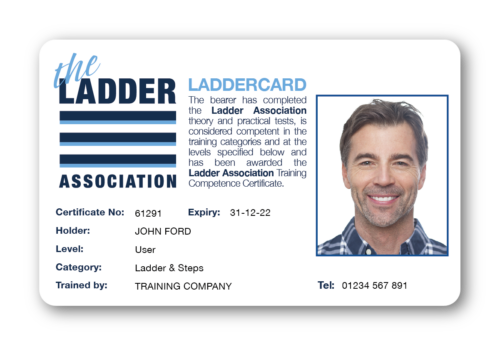
Although ladders are fairly simple pieces of work equipment, you must still be ‘competent’ to use them, whether at work or at home. That’s because you’re working at height, which always carries risks, and it’s important you know how to do it safely.
Ladder Association training is about more than just using the ladder; it’s about understanding when it’s right to use a ladder (and when it’s not!), choosing the right ladder and then understanding the simple steps to take to use the ladder safely.
Let’s explore your options…
Which best describes you?
Or, jump straight to learn more about each course...
Ladder & Stepladder for Users
If you use ladders and stepladders, this course is for you! You'll learn when it's right to use a ladder (and when it's not), and how to use, store and handle them safely.
What's covered?
- Current Legislation, Regulations & Guidance
- Roles & Responsibilities of Employers & Employees
- Equipment - Leaning Ladders, Stepladders & Combination Ladders
- STEP methodology
-
1/2 Day
- Site
- Task
- Equipment
- People
- Pre-Use Checks
- Storage, Transportation & Maintenance
- Personal Hazards


Ladder & Stepladder Inspection
Employers need to ensure ladders are in a safe condition before use, and that regular inspections are carried out by a competent person. This course is designed for any person whose duty it is to inspect and maintain ladders at work.
What's covered?
- Current Legislation, Regulations & Guidance
- Roles & Responsibilities of Employers & Employees
-
Detailed Visual Inspections of Ladders & Stepladders
- Inspection Procedure
- Carrying Out an Inspection
- Frequency of Inspections
- Recording Inspections
- Advice on Repairs & Disposal Procedures
- Personal Hazards
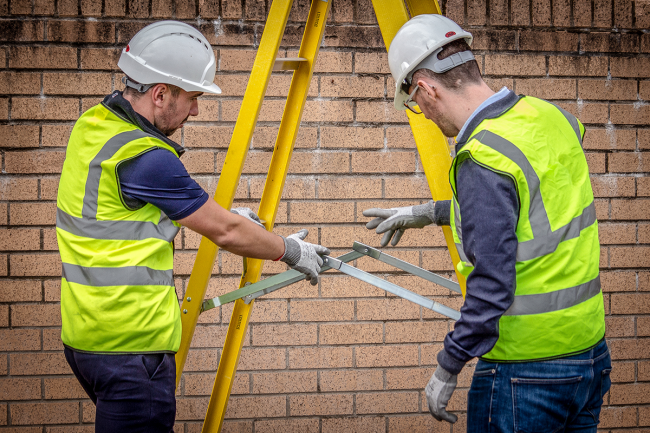

Ladder & Stepladder User & Inspection
This full day course brings together the guidance on safe use of ladders and stepladders, with an additional module on ladder inspection, and is designed for any person whose duty it is to use, inspect and maintain ladders at work.
What's covered?
- Current Legislation, Regulations & Guidance
- Roles & Responsibilities of Employers & Employees
- Equipment - Leaning, Combination, Multi Hinged and Telescopic Ladders, plus Stepladders
- Site > Task > Equipment > People
- Pre-Use Checks
-
Detailed Visual Inspection of Ladders & Stepladders
- Inspection Procedure
- Carrying Out an Inspection
- Frequency of Inspections
- Recording Inspections
- Advice on Repairs & Disposal Procedures
- Personal Hazards


Ladders at home
Accidents do happen - but they can be avoided
Sadly, accidents at home involving a ladder do happen.
Sometimes it's due to faulty or inappropriate equipment, sometimes poor conditions (bad weather, uneven ground), and sometimes misuse (over-reaching, not maintaining three points of contact).
Whatever the cause, each statistic represents a real person who may have suffered life-changing injuries after falling from a ladder. It is important you are aware of these incidents and take proper precautions to prevent something similar happening to you.
Hospital admission data from NHS England, NHS Wales and Public Health Scotland shows that between 2014/15 and 2021/225:





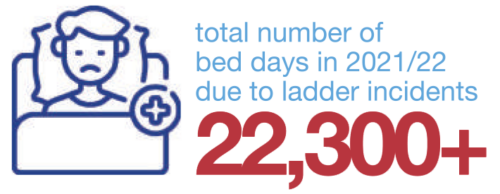
Ladders at work
Falls from height - in general
Falls from height remain the most common kind of workplace fatality, accounting for around a quarter of all worker deaths and 8% of all non-fatal injuries every year.
Latest workplace accident statistics from the Health and Safety Executive (HSE) show that in 2023/24 falls from height (all falls, not limited to ladders) resulted in 50 fatalities¹, up to 37,000 injuries², up to 668,000 working days lost³, and estimated cost to Great Britain of over £956million4.
Ladder use at work
With many fall from height incidents at work involving a fall off a ladder, it’s essential that people use the right type of ladder for the specific task and know how to use it safely.
To use a ladder, you must be competent or, if you are being trained, you should be working under the supervision of a competent person. Competence can be demonstrated through a combination of training, practical and theoretical knowledge, and experience.
Ladders and stepladders are not banned under health and safety law.
In fact they can be a sensible and practical option for low-risk, short-duration tasks, although they should not automatically be your first choice.
Training should be appropriate for the task, and this includes knowing:
- HOW to assess the risks of using a ladder for a particular task;
- WHEN it is right to use a ladder (and when it is not);
- WHICH type of ladder to use and how to use it.


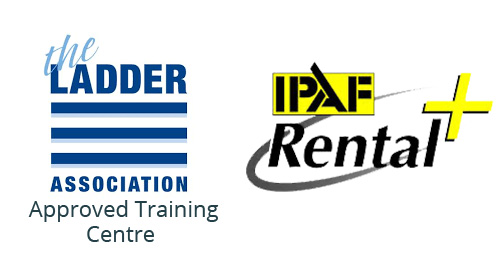
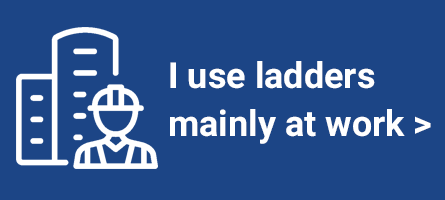

 Ladder & Stepladder for Users
Ladder & Stepladder for Users Ladder & Stepladder Inspection
Ladder & Stepladder Inspection Ladder & Stepladder User & Inspection
Ladder & Stepladder User & Inspection
Connect with us
Like us on Facebook Join us on Google+